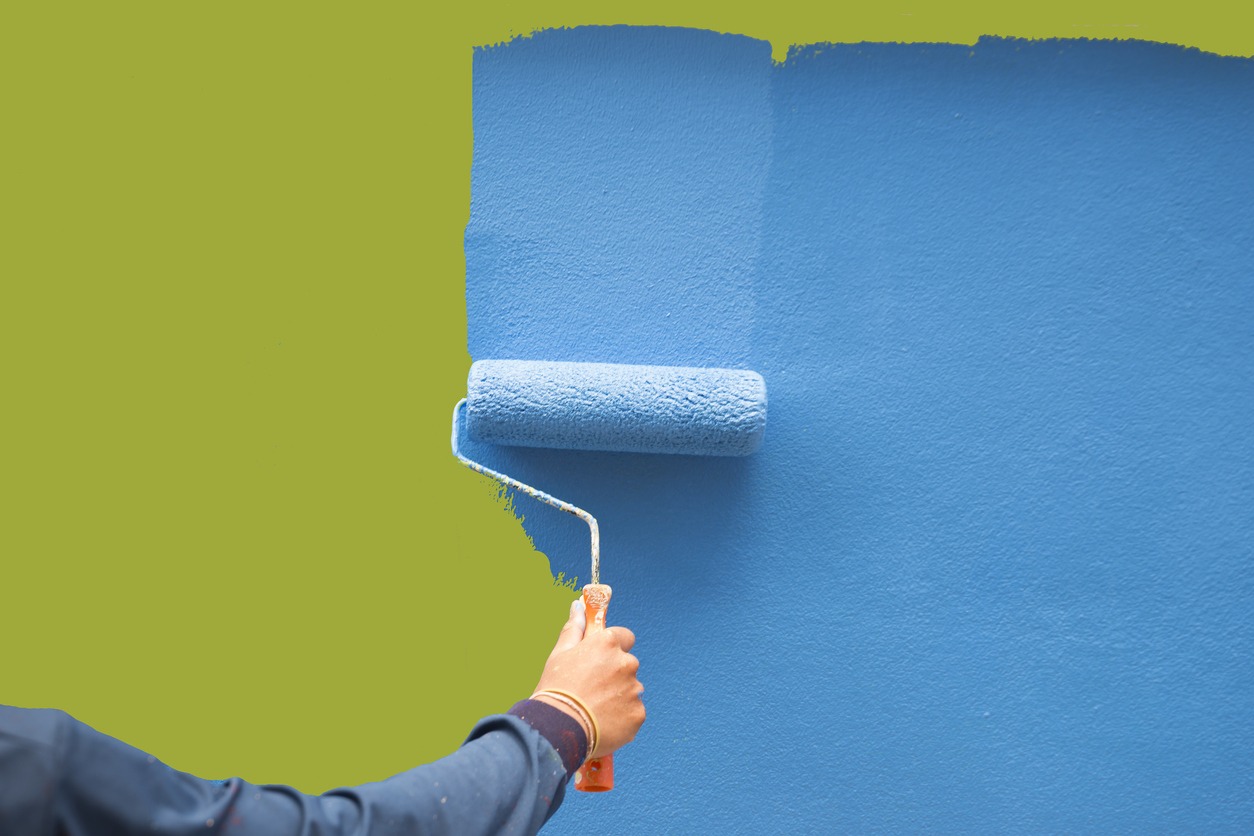When starting a house painting project, you’d probably ask: “How much paint do I need?” Determining the ideal amount of paint is crucial for your budget and project success.
This article helps you to calculate the amount of paint accurately you’ll need for your interior house painting project. From measuring the walls to choosing paints, this article will cover all the bases. Just in case you need help, painting contractors are here to provide professional advice.
Understanding paint coverage
Not all walls are equal in paint needs. Understanding coverage prevents running out of paint. It’s always better to end up with a little extra paint (this will be helpful for touchups) than running out of paint mid-project.
The basics of coverage
Let’s talk about “paint coverage” first. It is the area that a single gallon of paint can cover and is usually measured in square feet.
- Standard coverage – The industry standard for paint coverage is about 350 to 400 square feet per gallon. This range can be a good starting point for estimating how much paint you’ll need.
- Paint thickness – Heavier and thicker paints might cover less area, while thinner paints could cover more.
Factors affecting coverage
- Surface porosity – When painting porous surfaces like new drywall, you may need more paint due to increased absorption.
- Paint color and type – Certain colors or highly pigmented paint may require extra coats, impacting coverage. Paint finishes like matte or gloss can also affect how the paint spreads.
- Number of coats – Consider additional paint coats for color change or imperfections. More coats require more paint.
- Application method – Different tools such as brushes, rollers, or sprayers affect paint usage. For example, rollers use more paint than brushes, but sprayers use more paint than rollers.
Professional tips for optimizing coverage
- Prep work – Cleaning, sanding, and priming surfaces can make your paint go further.
- Quality tools – High-quality rollers and brushes can help you apply paint more evenly, improving coverage.
- Testing – If in doubt, buy a quart of paint and do a test patch to see how well (or poorly) it covers.
Calculating the surface area
Measure the wall’s surface area to determine how much paint you’ll need for your interior painting project. This might seem like a no-brainer, but consider a few nuances to help you ensure accuracy.
Measuring walls
Measure the walls you plan to paint. For convenience, get a tape measure, a notepad, and perhaps an extra pair of hands.
- Length and height – Measure the length and height of each wall in feet. If your walls are different sizes, measure each one separately.
- Total area – Multiply the length by the height of each wall to get its area in square feet. For example, a wall that is 10 feet long and 8 feet high has an area of 80 square feet.
- Consistency in units – Ensure you consistently use the same unit of measurement (feet or meters) for all your measurements.
Accounting for windows and doors
Subtract the areas of the windows and doors, as you won’t be painting these.
- Measure windows and doors – Measure the height and width of each window and door.
- Subtract their area – Multiply the height and width of each to get their area and subtract this from the total wall area. For example, if a window is 4 feet by 3 feet (12 square feet), deduct this from the wall’s total area.
Irregularly Shaped Rooms
If you have rooms with irregular shapes, such as alcoves or bay windows, pay special attention to them.
- Break it down – Divide the irregular shape into regular shapes (rectangles, triangles), measure these individually, and add their areas together.
- Consider the ceiling – If painting the ceiling, measure it as a separate surface. See it as a floor plan of the room for measurement purposes.
Other considerations
- Closets and built-ins – If your room has closets or built-in features, measure the visible wall space around them.
- Height variations – Measure each section separately for rooms with various wall heights.
Step-by-step example
Here’s a quick example:
- Measure the walls – The room has four walls, each measuring 12 feet long and 8 feet high.
- Calculate the wall area – 12 ft x 8 ft = 96 sq ft per wall. With four walls, that’s 96 sq ft x 4 = 384 sq ft.
- Subtract windows and doors – Two windows (3 ft x 4 ft each, so 12 sq ft each) and one door (7 ft x 3 ft, so 21 sq ft). Total non-paintable area = 12 sq ft x 2 + 21 sq ft = 45 sq ft.
- Adjusted wall area – 384 sq ft – 45 sq ft = 339 sq ft of the surface you’ll paint.
Follow these steps and consider the specific characteristics of your room to calculate the wall surface area accurately. It is a crucial step in determining how much paint you will need for your project.
Step-by-step guide to calculate paint needed
Simplify paint calculations by following these steps to buy just the right amount.
Step 1: Measure the wall area
- Gather your tools – Get a tape measure, a calculator, and something to take notes with.
- Measure each wall – Measure the height and length of each wall in feet. If the room isn’t a perfect rectangle, break it into smaller rectangles and measure each separately.
- Calculate each wall’s area – Multiply the length by the height of each wall to find its area in square feet.
- Add up all areas – Combine the areas of all the walls to get the total wall area.
Step 2: account for non-paintable areas
- Measure windows and doors – Subtract the area of windows, doors, and any other spaces you won’t paint.
- Subtract these from the total wall area – It will give you the actual paintable surface area.
Step 3: Determine the number of coats needed
- Assess the surface – Consider your walls’ current color and condition to determine the color you plan to use. Darker colors or a significant color change typically require more coats.
- Decide the number of coats – Paint professionals usually recommend two coats of paint for even and long-lasting coverage.
Step 4: Calculate the total paint needed
- Understand paint coverage – One gallon of paint usually covers about 350 to 400 square feet for one coat.
- Use the formula – Divide the total paintable area by the coverage per gallon, then multiply by the number of coats.
Step 5: Consider additional surfaces
- Ceilings and trims – If you’re painting ceilings and trims, measure these areas separately. Then, calculate their paint needs using the same method.
Step 6: Add extra for touch-ups
- Calculate extra paint – Add about 10% to your total to account for touch-ups or mistakes.
Here’s a practical example:
- Total wall area – After measuring and calculating, the total wall area is 500 sq ft.
- Non-paintable area – Windows and doors account for 50 sq ft.
- Paintable area – The calculation will leave you with 450 sq ft (500 – 50).
- Number of coats – Planning for two coats.
- Total paint needed – Assuming one gallon covers 350 sq ft, 450/350 × 2 = 2.57 gallons.
- Round up and add extra – Rounding up, we would need 3 gallons and the additional 10% for touch-ups, making it around 3.3 gallons.
Parting words
Save calculations and paint details to estimate paint quantity accurately and for future reference. Following these detailed steps, you can accurately calculate how much paint you’ll need for your project. Precision in planning ensures successful execution.
Do you feel overwhelmed with paint estimation and scheduling? Contact Custom Painting, Inc. at 925-866-9610 for help with your next interior painting project!


